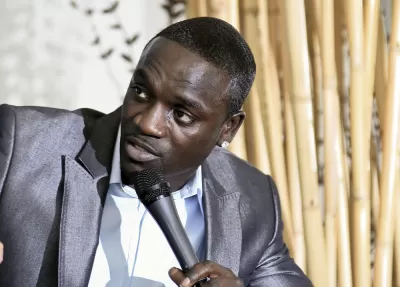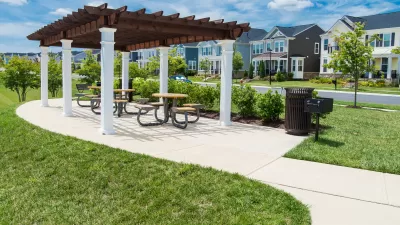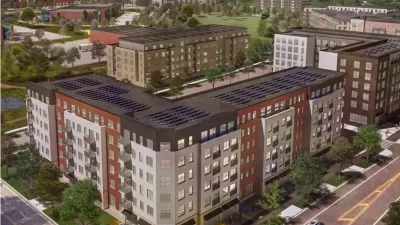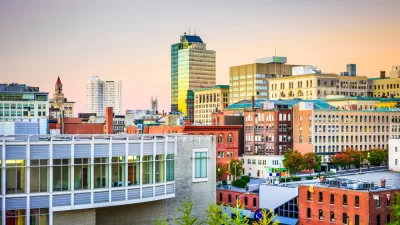Akon City would rise from farmland in Senegal, in the tradition of previous master-planned urban areas like Washington, D.C. or Canberra, with ambitions on creating a "very, very African" city with a futuristic take on technology.

"The twisting metallic skyscrapers planned for Akon City look like they could sprout on Mars in the distant future — blueprints that scream: Bring your hoverboard," according to an article by Danielle Paquette.
Akon City is the brainchild of Akon, an R&B singer "who split his youth between this West African country and New Jersey" and is now moving forward with an expensive and ambitious project to build a testbed for "smart city" technology, urban design and planning that centers the African experience, and more.
“I want the buildings to look like real African sculptures that they make in the villages,” Akon, 47, told a masked crowd Monday in the seaside capital, Dakar.
The project's website includes a section on the master planning and physical planning principles informing the planning and design process. "Futuristic design begins with an informed understanding of the past," reads the site.
Senegal officials are hoping that Akon City's location on the Atlantic Coast of Africa will drive new levels of tourism to a country hit hard by the economic downturn of the coronavirus pandemic.
"Tourism was hit especially hard in the country of nearly 16 million, which strives to leverage its glittering Atlantic shorelines. A four-month airport closure — followed by border restrictions that now allow mostly citizens and residents to enter — has cast adrift many workers here, whose average wages are about $189 a month," according to Paquette.
The article also includes early assessments of the design proposals, coinciding with a big media event, with Akon in the country to lay the first stone for the project on land donated by the Senegalese government for the project.
FULL STORY: Akon just unveiled his $6 billion ‘futuristic’ city in Senegal. The reviews are mixed.

Alabama: Trump Terminates Settlements for Black Communities Harmed By Raw Sewage
Trump deemed the landmark civil rights agreement “illegal DEI and environmental justice policy.”

Planetizen Federal Action Tracker
A weekly monitor of how Trump’s orders and actions are impacting planners and planning in America.

The 120 Year Old Tiny Home Villages That Sheltered San Francisco’s Earthquake Refugees
More than a century ago, San Francisco mobilized to house thousands of residents displaced by the 1906 earthquake. Could their strategy offer a model for the present?

LA’s Tree Emergency Goes Beyond Vandalism
After a vandal destroyed dozens of downtown LA trees, Mayor Karen Bass vowed to replace them. Days later, she slashed the city’s tree budget.

Sacramento Leads Nation With Bus-Mounted Bike Lane Enforcement Cameras
The city is the first to use its bus-mounted traffic enforcement system to cite drivers who park or drive in bike lanes.

Seattle Voters Approve Social Housing Referendum
Voters approved a corporate tax to fund the city’s housing authority despite an opposition campaign funded by Amazon and Microsoft.
Urban Design for Planners 1: Software Tools
This six-course series explores essential urban design concepts using open source software and equips planners with the tools they need to participate fully in the urban design process.
Planning for Universal Design
Learn the tools for implementing Universal Design in planning regulations.
Ada County Highway District
Clanton & Associates, Inc.
Jessamine County Fiscal Court
Institute for Housing and Urban Development Studies (IHS)
City of Grandview
Harvard GSD Executive Education
Toledo-Lucas County Plan Commissions
Salt Lake City
NYU Wagner Graduate School of Public Service





























